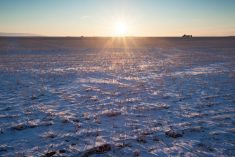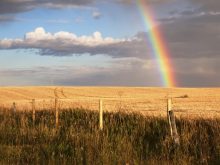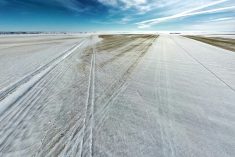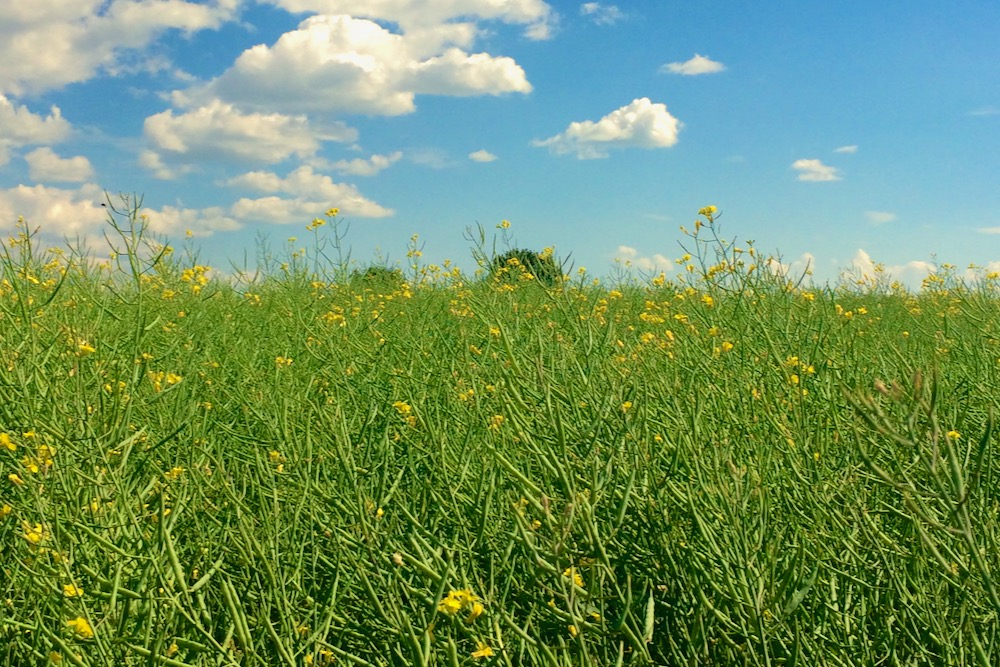Before we talk about the 2023 map, perhaps we should take readers back to the very first Stubble Soil Moisture Map, which was for the province of Saskatchewan only. It appears on page 109 of Henry’s Handbook of Soil and Water if anyone wants to check it out. As far as I know, it was the only such map in Canada or the United States.
The word “stubble” was used in those days as we still summerfallowed about half of the land in Saskatchewan. This map was intended to provide information about areas where stubble-seeded crops had a good chance if soil fertility was taken care of.
That map happened by accident. At the time, we had dozens of on-farm field fertilizer tests across the province. In doing soil probing for those tests, we discovered in the fall, the depth of moist soil could be determined by a single soil probe in a quarter section and often did not change over many miles. The moist soil came from rain that fell after the crop quit using water. The assumption was the crop had used all available water to four feet and we were just mapping the wetting front from the fall rains.
Read Also

Cancer agency reclassifies another herbicide ‘probably carcinogenic’
The WHO’s cancer research agency has now put atrazine, a herbicide well known to corn growers, in the same potential-hazard category where the agency put glyphosate.
Saskatchewan Agriculture had weekly crop reports, as they still do, and those reports had rainfall data from hundreds of reporters in almost all of the many rural municipalities of the day. I picked a day in August to start counting the fall rains, and it was all done with a hand calculator on paper. A map was made of rainfall and that was checked with field probing — mostly with projects where folks were already in the field.
In the 1970s, Agriculture Canada’s Saskatoon Research Station made a Grasshopper Forecast Map, which was posted on all of the hundreds of walls of wooden elevators of the day. We used that base map and distribution system.
[RELATED] Alberta Farmer Express: All in all, it wasn’t a bad crop year – and that’s welcome news
The hand-scratched, original, rough copy of that first soil moisture map now rests comfortably in the University of Saskatchewan archives for future generations to find.
Making the three-province 2023 map
As in previous years, the map is based on rainfall data in 2022 with emphasis on rain after the 2022 crop stopped using water. In some cases, rainfall during crop growth is more than the crop can use, so there may be some left over to add to fall rains. The data sources for 2022 are the same as previous years.
Alberta Agriculture’s online weather station data viewer is a great source of rainfall data. There is a very high density of stations, and it is easy to select as many as seven stations at a time and generate a graph of daily precipitation and on a cumulative basis.
The rainfall graph at Oyen (see below) is what can be obtained for up to seven selected nearby stations. It is very good data for local and regional rainfall for the entire season. Note that Oyen had only seven inches of rain all year, so there will be nothing left for next year.

Saskatchewan does not have a weather station network, but Saskatchewan Agriculture has 189 crop reporters who keep track of rain and forward data to Moose Jaw. Sask Ag then prepares weekly and cumulative rainfall maps, which are of great value in tracking soil moisture.
Manitoba also has many weather stations and rain data can be easily accessed on a daily basis for all of the stations. Manitoba also has soil moisture maps based on a network of permanent soil moisture sensors at 5, 20, 50 and 100 centimetres. Some individual sites show much more soil moisture than I have mapped.
Spot checking of 2022 daily rainfall data for the few remaining Environment Canada sites is also used to help make decisions on where lines are drawn.
The 2023 map
It is no surprise the 2023 map has a lot of red and yellow ink (see at top). On my Dundurn farm, we had two inches of rain in May and two inches in June. The tap turned off in July and the high temperatures quickly sucked up any little showers that came along.
Even the mountain areas of western Alberta had little rain and the rest of the province was very dry.
More snow jobs and possibilities for 2023
For the past two years, snow has been a big contributor in keeping the truckers busy at harvest time. In the hilly land at my Dundurn farm, snowbanks can pile up at high elevations on the lee side of a hill. The sloughs were all full of snow and drained down quickly into the dry soil.
The photo below shows the old tree row that catches snow. The big slough was seldom seeded in wet years. Some years, I had three, two-inch pumps going for many hours to pump the slough so I could seed some of it.

In the past two years, the slough was piled high with snow but drained out quickly as soon as the snow melted. My renter planted canola in 2022 and managed more than 30 bushels with only two inches of rain in May and two inches in June. He also knew to combine through the good spots at two miles per hour so all of the canola went into the tank. Modern combines can thresh much more than they can separate when it comes to canola.
The snow that fell in late October and early November 2022 came with warm weather, so there was some concern about a frozen surface crust that would prevent rapid entry of spring snowmelt and lead to runoff to sloughs. All available evidence suggests that is not true.
The high point on my Dundurn home quarter is 425 feet above the elevation at the University of Saskatchewan campus. Higher elevations usually get more snow than the plains and that was the case for the early November snow this year.
My neighbours are finding dry soil beneath the snow when they move snow to clear the yards. I also checked with Phillip Harder at the U of S, who has research projects that document the situation, and he also found the soil beneath the snow remains like a sponge to soak up the snowmelt. That all means we should be able to rely on snow once again to help make up for some of the rainfall deficit.
As usual, here’s to 10 inches of rain May through July in 2023. Ten inches of rain makes us all good farmers.
















